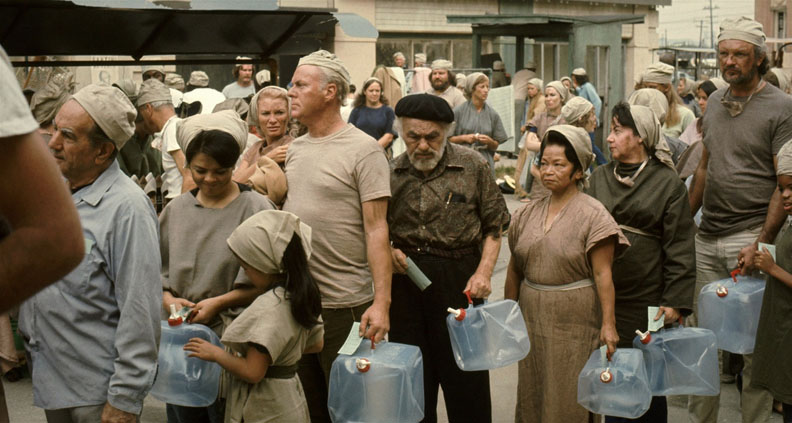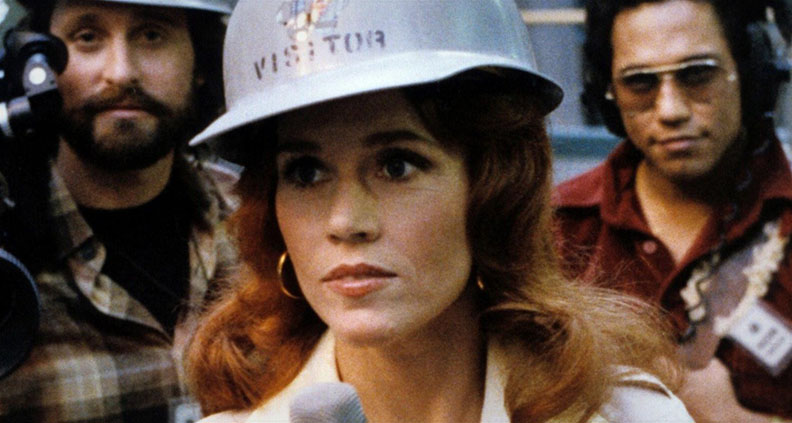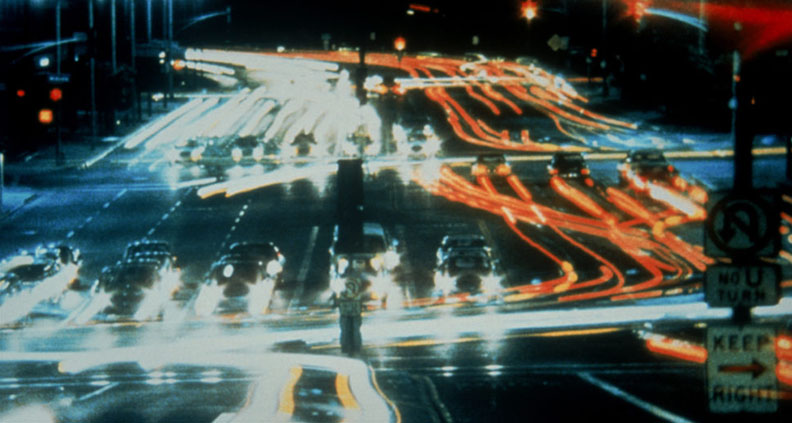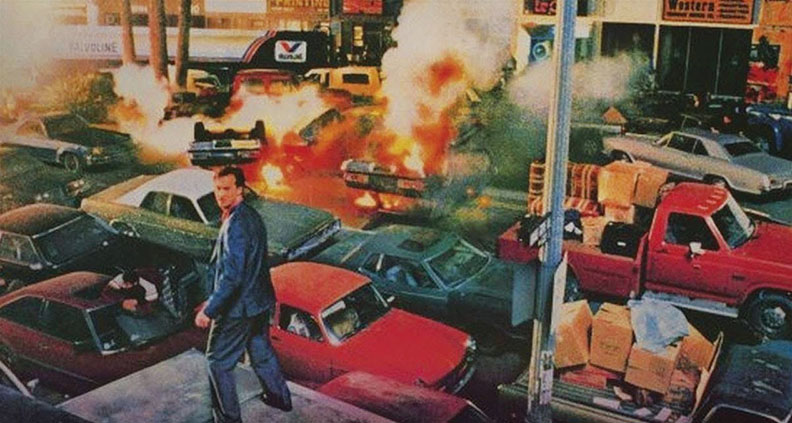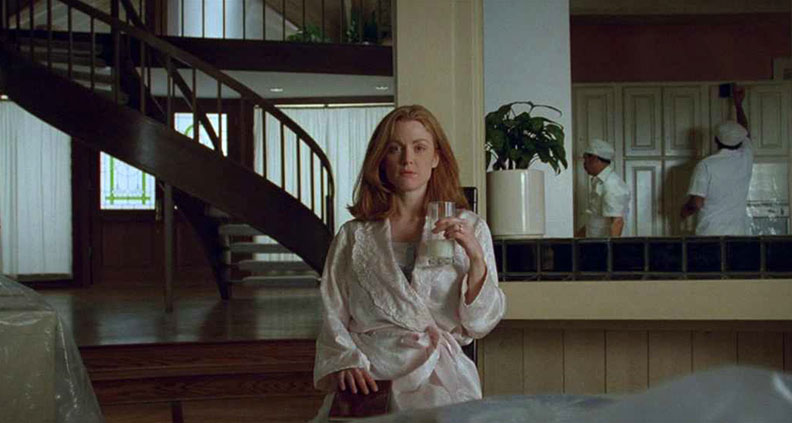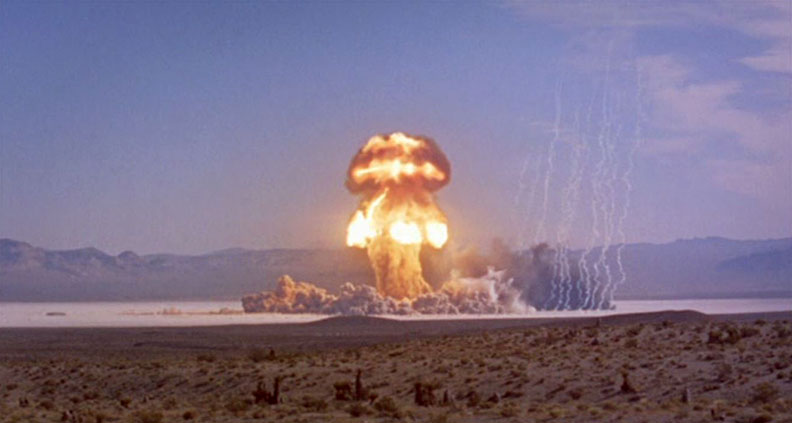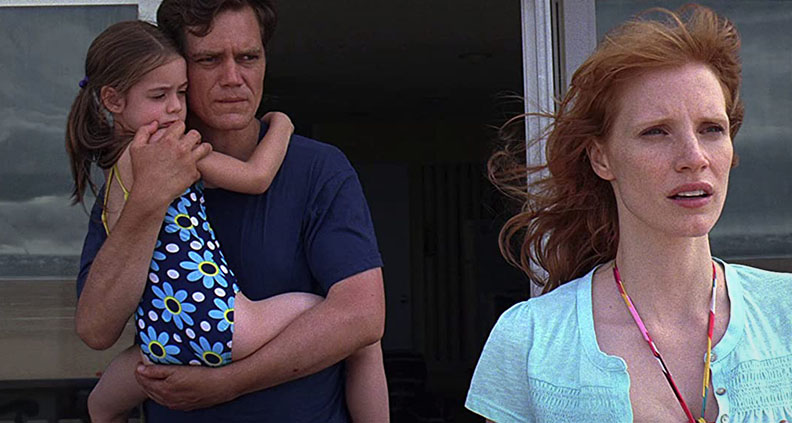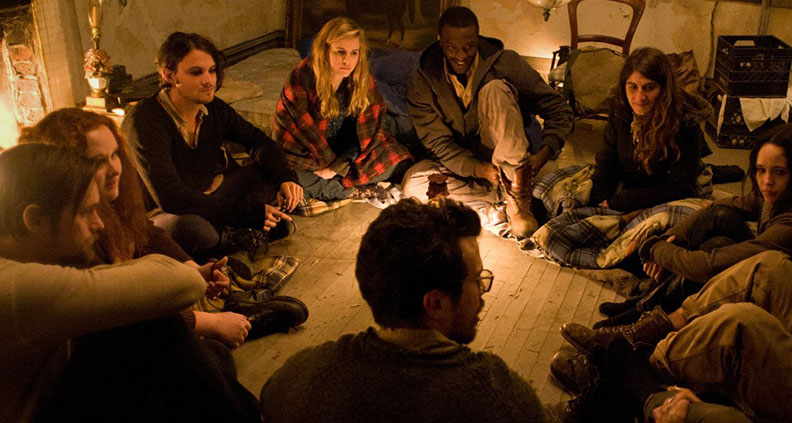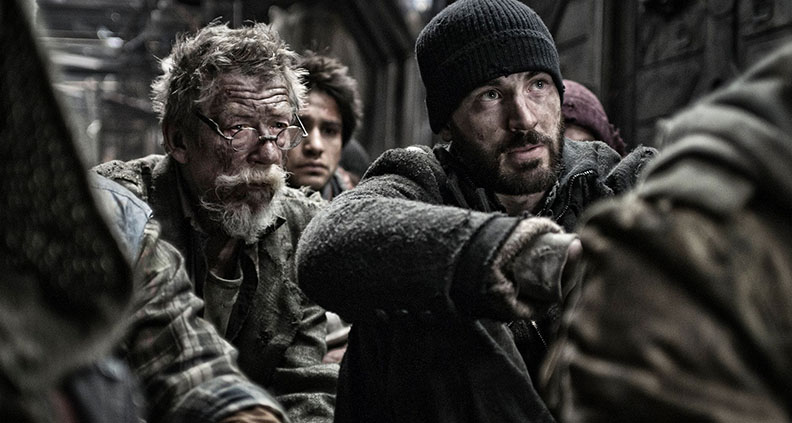In honor of Earth Day, this month’s 10 Indies We Love is looking back at some of our favorite indie (and indie-adjacent) films that remind us to treat our planet with care—lest our species find itself at the center of one of the catastrophic environmental scenarios listed below. Here now are 10 indies we love about environmental upheaval, post-apocalyptic event(s) and characters obsessed with the end of the world—but don’t worry: we also threw in a couple of upbeat and inspiring docs as a friendly reminder to take part in nurturing the Earth and to appreciate its beauty. Enjoy!
SOYLENT GREEN (1973)
Director: Richard Fleischer Starring: Charlton Heston, Leigh Taylor-Young Where You Can Watch: rental, all major platforms Why We Love It: This adaptation of Harry Harrison’s classic sci-fi novel takes place on a future Earth (circa 2022) that’s overpopulated, horribly polluted and scraped of all natural resources. Charlton Heston stars as a detective in charge of discovering who murdered the CEO of Soylent Industries, the corporation in charge of the world’s main food source. Part of the fun of watching movies from this era stems from the fact that “the future” is literally upon us now—and lucky for us we aren’t actually on the verge of the Earth depicted in this film. But Soylent Green is still one of the most realistic of all post-apocalyptic sci-fi flicks. Scary to think that by the time our future comes around—say, in 3022—overpopulation and resource scarcity could very well be the world’s truth.
THE CHINA SYNDROME (1979)
Director: James Bridges Starring: Jane Fonda, Jack Lemmon, Michael Douglas Where You Can Watch: Crackle, Pluto TV (with ads) Why We Love It: This Oscar-nominated suspense drama has become one of Hollywood’s most acclaimed portraits of environmental disaster. Jane Fonda plays a reporter doing research for an article about alternative energy sources when she witnesses an accident at a nuclear power plant. For years Fonda had fought criticism and faced controversy over her liberal activism, and when this film was released the actress found herself—along with co-stars Jack Lemmon and Michael Douglas—in hot water yet again. Many conservatives blasted the film and its stars for their anti-nuclear political views, and claimed the stars were using the movie to promote their own left-leaning agenda. Ironically enough, two weeks after the film opened, the worst accident in nuclear power plant history occurred at the Three Mile Island Nuclear Generating Station in Pennsylvania.
KOYAANISQATSI (1982)
Director: Godfrey Reggio Where You Can Watch: Pluto TV Why We Love It: More of a tone poem or an epic filmed essay than a narrative-driven documentary, Godfrey Reggio’s landmark experimental feature Koyaanisqatsi features 85 minutes of deliberately paced slow motion and time-lapse photography of awe-inspiring vistas from across the United States. The film features sequences depicting natural environments and busy cityscapes, subtlty juxtaposing the two disparate habitats to illustrate the sometimes-symbiotic, sometimes-destructive relationship between humanity and its natural surroundings. Propelled by a typically hypnotic score from composer Phillip Glass, Koyaanisqatsi is the first of Reggio’s “Qatsi Triliogy”, chronicling the relationship between humans, nature and technology. The film is a thoughtful, meditative experience—required viewing for anyone looking to better appreciate their place within the larger ecosystem.
MIRACLE MILE (1988)
Director: Steve De Jarnatt Starring: Anthony Edwards, Mare Winningham Where You Can Watch: Pluto TV (with ads) Why We Love It: This one’s dedicated to you, Los Angeles! In this ‘80 drama, a pre-ER Anthony Edwards meets-cute with Mare Winningham at the La Brea Tar Pits (along LA’s Miracle Mile district), only to receive an out-of-the-blue phone call telling him that the United States is about to embark on a nuclear war with the Soviet Union. How’s that for bad timing! Miracle Mile is one of those “how would you spend your last 24 hours on Earth”-type movies; for Edwards and Winningham, they spend their entire first date plotting how to escape LA before it’s too late. The film was made on a small budget and remains one of the disaster genre’s most cultish and lesser-known titles. The film also received two Film Independent Spirit Award nominations: Best Screenplay and Best Supporting Female for Winningham—who won years later in the same category for her role in 1996’s Georgia.
SAFE (1995)
Director: Todd Haynes Starring: Julianne Moore Where You Can Watch: The Criterion Channel Why We Love It: Hailed by The Village Voice as “The Best Film of the ‘90s” Safe is only the second feature from innovative indie auteur—and frequent Spirit Award nominee/winner—Todd Haynes. The film is an indie classic that all cinephiles must see at least once, featuring an unforgettable, career-high lead performance from two-time Spirit Award-winner Julianne Moore. Moore plays a housewife who seemingly has the perfect life, until she starts having a series of onset symptoms she’s convinced are the result of airborne toxins. The film is a gripping portrait of how easy it is to become a prisoner of one’s own environment, as Moore becomes obsessed with the idea that the Earth is poisoning her. Can you imagine a life in which you’re terrified to breathe? The film is a pivotal stamp in both Haynes’ and Moore’s career and was nominated for four Film Independent Spirit Awards in 1996, including Best Feature.
EARTH DAYS (2009)
Director: Robert Stone Where You Can Watch: Hoopla, Kanopy Why We Love It: Robert Stone’s comprehensive 2009 documentary Earth Days is, for all intents and purposes, a biography of the environmental movement within the United States. The film traces the origins of green thinking back to post-WWII America, when rapid industrialization and manufacturing combined with an explosive increase in population (hello, Baby Boom) to cause—largely for the first time—some forward-thinking academics and activists to sit up and say “Oh shit, maybe its possible to actually run out of natural resources!” Stone follows this thread through the implementation of the very first Earth Day in 1970 up until the present, with interviews from an all-star team of scientists, politicians, futurists and other green thinkers. The film is an informative, entertaining resource for anyone looking to learn more about the history and purpose of Environmentalism.
TAKE SHELTER (2011)
Director: Jeff Nichols Starring: Michael Shannon, Jessica Chastain Where You Can Watch: Shudder Why We Love It: Jeff Nichols’ intense 2011 drama Take Shelter is a film about many things: family, faith, mental health and—not least of all—human beings’ relationship to the environment. The movie stars the great Michael Shannon as a family man plagued with visions of an apocalyptic storm. Like a modern-day Noah, Shannon’s Curtis La Forche begins to make preparations to save his family (including Jessica Chastain as his wife) from what he’s convinced is an imminent and inevitable apocalypse. It’s unclear until the very end (no spoilers!) whether Shannon’s paranoid patriarch is crazy or whether he’s actually on to something, but regardless of the veracity of his visions one thing is clear: humans exist at the whim of massive climate trends, which can appear and assault without warning. Take shelter, indeed.
WHO KILLED THE ELECTRIC CAR (2006)
Director: Chris Paine Where You Can Watch: rental, all platforms Why We Love It: It’s true, sometimes a documentary about zero-emission vehicles can make you cry. Director Chris Paine’s 2006 look at the trifecta of power that is the auto industry, oil industry and big government compiled interviews with political figures as well as celebrities and other fans of the electric car (including Tom Hanks and Ed Begley, Jr.) to take us through the history of the eco-friendly vehicle, from its physical creation to the fight to finally put it on the market. The film premiered at Sundance before making its way through the broader festival circuit and a brief theater run, generating righteous anger among audience members at the hoops and challenges put in place to stymie efforts to commercialize electric vehicles. Ten years after the film was made the Prius is now ever-present and low-emission vehicles are more widely available than ever, though there’s still a ways to go to minimize the negative environmental impact caused by heavy traffic, and in reforming the industries that mandate such choices for consumers.
THE EAST (2013)
Director: Zal Batmanglij Starring: Brit Marling, Ellen Page, Alexander Skarsgard, Patricia Clarkson Where You Can Watch: Rental, all platforms Why We Love It: Inspired by the activist group Anonymous, Zal Batmanglij’s sophomore feature follows a group of environmentalists who are the masterminds behind an elite firm called “The East” who fight to rid the world of evil corporations by executing covert attacks. It’s a thrilling, small-scale nail-biter with up-to-the-minute, real-world scenarios designed to challenge viewers’ ideological views while simultaneously keeping you on the edge of your seat. Featuring a talented cast who each contribute both physical and psychological versatility to their roles, the film gets the cranium firing and the pulse pounding in equal measure. Sadly, the film remains under the radar, but if you’re able to find it you’ll be glad you watched.
SNOWPIERCER (2013)
Director: Joon Ho Bong Starring: Chris Evans, Tilda Swinton, Ed Harris Where You Can Watch: Netflix Why We Love It: One of 2013’s biggest surprise successes was Joon Ho Bong’s intense post-apocalyptic thrill-ride Snowpiercer. Set in 2031, the acclaimed South Korean filmmaker adapted a French graphic novel to depict a world in which the majority of mankind is wiped out after a failed climate-change experiment. Those lucky few who survived have been living onboard a massive, perpetually moving train for 17 long years, encircling the globe on an endless loop while developing their own (inevitably flawed) economy and class system. An all-star cast help make this phantasmagorical world seem perfectly realistic, causing viewers to ponder what type of socio-economical warfare we’d face as a society should something similar ever occur IRL. It makes you shudder to think about, and not just because of the cold.
Film Independent promotes unique independent voices by helping filmmakers create and advance new work. If you want to help support us and all that we do to help support visual storytellers worldwide, now’s the time. For a limited time through April 30, all donations received will be doubled, up to $80,000, thanks to a generous Film Independent Board Members and Friends Matching Gift. Become a Member of Film Independent here.
Keep up with Film Independent…
Twitter Instagram Facebook YouTube
(Header: Soylent Green)
